Page 233 of 288

The correct tire pressure for the spare wheel is
l ocated on a label on the driver's side B-pillar.
Because tec hnical changes may be made to
vehicle equ ipment dur ing the model yea r, a l
ways compa re the tire size designation on the
tire pressure label on your vehicle wit h the
tires on your vehicle . Make s ure that the tire
size information on the veh icle label is the
same as the s ize of the tires on the vehicle.
This is especially important if the vehicle be
longs to someone else or you bought the veh i
cle with different rims/tires or you boug ht the
ve hicle as a previously owned vehicle.
Remember, your safety and that of your pas
sengers also depends on mak ing su re that
l oad limits are not exceeded. Vehicle load in
cludes everybody and everything in and on the
veh icle. These load limits are technically refer
red to as the vehicle's Gross Vehicle We ight
Rating ("GVWR") . The Gross Ax le Weight Rat
ing ("GAWR") is the maximum load that can
be app lied at each of the veh icle's two axles.
The Gross Vehicle Weight Rating and the
Gross Axle Weight Rating are listed on the
safety compliance st icker label located on the
driver's side B-p illa r. The t ire pressure label o n
your Aud i lists the maximum combined
weight of a ll of the occupants and luggage or
other cargo that the vehicle can carry. For the
l ocation of the tire pressure labe l~
fig. 156.
A WARNING
Overloading a vehicle can cause loss of ve
hicle control, a crash or other accident, se
rious personal injury, and even death.
- Carrying more weight than yo ur vehicle
was designed to carry will prevent the
vehicle from handling properly and in crease the risk of a loss of veh icle con
trol.
- The brakes on a veh icle that has been
overloaded may not be able to stop the
vehicle within a safe distance .
- Tires on a vehicle that has been overload
ed can fail suddenly causing loss of con
t rol and a crash.
Tire s an d wheel s 231
-Always make sure that the total load be
ing transported - includ ing the weight of
a trailer hitch and the tongue we ight of a
loaded trailer -does not make the vehi
cle heavier than the vehicles Gross Veh i
cle Weight Rating.
A WARNING
- Inco rrect tire pressures and/or underin
flation can lead to a ser ious or fatal acci
dent.
- Inco rrect tire pressures and/or underin
flation cause increased tire wear and can
affect the handling of the vehicle.
- Inco rrect tire pressures and/or underin
flation can a lso lead to sudden t ire fail
ure, including a blowou t and sudden de
flation, caus ing loss of veh icle contro l.
Checking tire pressure
The correct tire pressure for the tires original
ly installed on your vehicle is listed on the tire
pressvre label located on driver's side 8-pil
lar.
T he recommended tire pressures are on the
ti re pressure label and in the table
~ page 229, Cold tire inflation pressure . This
means that the pressure m ust be checked and
adjusted when the tire has not been dr iven for
more than a couple of miles (kilometers) at
low speeds during the previous three hours.
Air in the tires expands when the tire heats up
as a result of internal frict ion as it flexes in
use. The tire pressure is h igher when the tire
has warmed up t han when it is "cold."
It is the inflation pressure in a "cold" t ire that
counts. Therefore, you should never let a ir out
of a warm tire to match "Cold tire inflat ion
pressure" recommendat io ns ~
page 229 . Th e
ti res wo uld then be unde rinfl ated and co uld
fail suddenly.
T he tire pressure label on your Audi lists the
recommended co ld tire inflation pressures at
max imum capacity for the new, or ig inal
equipment tires that were on your vehi cle at
•
•
•
Page 234 of 288

232 Tire s and wheel s
the time it was manufactured . For the
location of the label
c::> page 229, fig . 156.
Most ti res lose a ir naturally over time. They
can also lose some a ir if you drive ove r a pot
ho le or hit a curb while parking . It is usua lly
not possible to see whether the radial tires
used today are under inflated just by looking
at them.
Therefore, be sure to check tire pressures at
l east once a month and always before going
on a long tr ip. Make sure to take the number
of people and the amount of luggage into ac
count when adjusting tire pressure for a trip -
even one that you would not consider to be
" long." See
c::> page 233 , Tires and vehicle
load limits
for more important information .
Always use an accurate tire pressure gauge
when checking and adjusting inflation pres
sures . Check all of the t ires and be sure not to
forget the spare t ire . If the pressure in any tire
is too high when the tire is "cold ," le t air out
of the tire slowly with the edge of the tire
gauge and keep checking the pressure until
you reach the pressure that is correct for the l oad (passengers and luggage) and kind of
driving you plan to do .
I f the pressure in any tire is too low, note the
diffe rence between the pressure in the cold
tire and the pressure you need and add the air
that you need to reach the cor rect pressure for
the vehicle load (passengers and luggage) for
the tires on your veh icle as lis ted on the on
your veh icle and in this manual and the k ind
of dr iv ing you pla n to do .
Never e xceed th e ma ximum inflatio n pres
sure li sted on th e tire s id ewall for an y rea
son .
Remember that the vehicle manufacturer, not
the tire manufacturer, determ ines the correct
tire pressure for the t ires on your vehicle .
It is important to check the tire pressure when
the tires are cold .
- Read the req uired ti re pressure from the tire
pressure label. The tire pressure labe l is lo
cated on the driver's side B-pi llar . - Tu
rn the va lve stem cap counter -clockwise
to remove it from the tire va lve .
- Place the air pressure gauge on the va lve.
- The tire pressu res should only be checked
and adj usted when the tires are co ld. The
slightly raised pressures of warm tires must
not be reduced.
- Adjust the tire pressure to the load you are
carrying.
- Reins tall the valve stem cap on the va lve.
When should I check the tire pr essure ?
The correct tire pressure is especially impor
tant at high speeds. The pressure should
the refore be che cked at least once a mo nth
and always before sta rting a jo urney. Do not
f orget to c heck the ti re p ress ure for the spare
whee l
c::> page 247.
When should I adjust the tire pressures?
Adjust the t ire pr essure to the load you are
ca rrying. After cha ng ing a whee l
or replacing
whee ls you have to adjust the ti re p ress ures
on all whee ls. In addition, you m ust then
store the new tire pressures in the tire pres
s u re monitoring system
c::> page 243 .
A WARNING
Incorrect tire pressures and/or underinfla
tion can lead sudden tire fa ilure, loss of
control, collision, serious personal injury
or even death.
- When the warning symbol
RIJ appears in
the instrument cluster, stop and inspect
the t ires.
- Incorrect tire pressure and/or underinfla
tion can cause increased tire wear and
can affect the handling of the vehicle and
stopping abi lity.
- Inco rrect tire pressures and/or underin
f lation can a lso lead to s udden t ire fail
ure, including a blowout a nd sudden de
f lation, ca using loss of veh icle cont ro l.
- The driver is responsible for the co rrect
tire pressures for all tires on the veh icle.
The appli cable pressure values are locat
ed on a sticker on the dr iver's side B-pil-
lar .
~
Page 235 of 288

-Only when all tires on the vehicle are fi l
led to the correct pressure, the tire pres
sure monitoring system can work cor rect ly.
- The use of incorrect tire pressure values
can lead to accidents or other damage.
Therefore it is essential that the driver
observe the specif ied tire pressure values
for the tires and the co rrect p ress ures for
the f unction of t he tire pressure mo nitor
ing system.
- Always inflate ti res to the recommended
and co rrec t tire pressu re befo re d rivi ng
off.
- Drivi ng with under inflated ti res bend
more, letti ng them get too ho t res ulting
in t read separation, sudden t ire fail ure
and loss of control.
- Excessive spee d and/ove rloading can
cause heat bui ld -up, sudden tire fa il u re
and loss of control.
- If the t ire pressure is too low or too high,
the tires w ill wea r prematurely and the
vehicle will not hand le we ll.
- If the t ire is no t flat and you do no t have
to change a w heel imme diate ly, drive at
reduced speed to the nearest service sta
t ion to check the tire pressure and add
air as required.
(D Note
Driving without va lve stem caps ca n cause
damage to the t ire va lves. To prevent this,
always make s ure that facto ry installed
valve stem caps on all wheels a re secure ly
mounted on the va lve .
@) For the sake of the environment
Underinflated tires will a lso increase the
fue l consumption .
Tires and vehicle load limits
There are limits to the amount of load or
weight that any veh icle and any t ire can carry .
A vehicle that is ove rloaded w ill not ha ndle
well and is more difficult to stop . Overload ing
can no t on ly lead to loss o f vehicle con tro l,
Tire s an d wheel s 233
but can also damage important parts of the
vehicle and ca n lead to sud den tire fai lure, in
clud ing a b lowout and s udden def lation that
can cause the vehicle to cras h.
Your safety and that of your passengers also depends on making sure that load limits are
not exceeded . Vehicle load includes everybody
and everything in and on the veh icle. These
load lim its are technically referred to as the
vehicle's
Gross Vehicle We ight Rating
("GVWR ") .
The "GVWR" includes the weight of the basic
vehicle, all factory installed accessories, a full
tank of fuel, o il, coo lant and other fluids plus
maximum load . The max imum load includes
the number of passenge rs that th e vehicle is
i n tended to car ry ("seat ing capa city") wi th an
ass umed we igh t of 150 lbs (68 kg) fo r each
passenger at a designated seating posi tion
and t he tota l weight of any luggage i n the ve
hicle . If you tow a trai ler, the weight of the
tra iler hitch and the tongue weight of the
loaded tra iler must be included as part of the
vehicle load.
T he
Gro ss Axle Weight Rating ("GAWR") is
the maximum load that can be applied at each
of the vehicle's two axles.
T he Gross Vehicle Weight Rating and the
G ross Axle Weig ht Rating are listed on the
safety comp liance sticker label located on the
driver's side B-pillar. Your Audi has 5 seat ing
pos itions, 2 in the front and 3 in the rea r for
total seating capacity of 5 . Each seating posi
t ion has a safety belt
~ page 131, Safety
belts.
The fact that there is an upper limit to your
vehicle's Gross Vehicle Weight Rating means
t h at the total weight of whatever is bei ng car
ried in the vehicle ( in cl ud ing t he weight of a
t ra ile r hi tc h a nd the tongue we ight of t he
l o ad ed tr ailer) is lim ited. The more p assen
gers in the vehicle or passengers who are
heavier than the standard weights assumed
mean that less weight can be carried as lug -
gage.
~
•
•
•
Page 236 of 288

234 Tires and wheels
The tire pressure label on your Audi also lists
the maximum combined weight of all of the
occupants and luggage or other cargo that
the vehicle can carry. For the location of the label
c::;,page 229, fig. 156.
& WARNING
Overloading a vehicle can cause loss of ve
hicle control, a crash or other accident, se
rious personal injury, and even death.
- Carrying more weight than your vehicle was designed to carry will prevent the
vehicle from handling properly and in
crease the risk of the loss of vehicle con
trol.
- The brakes on a vehicle that has been
overloaded may not be able to stop the
vehicle within a safe distance.
- Tires on a vehicle that has been overload
ed can fail suddenly , including a blowout
and sudden deflation, causing loss of
control and a crash.
- Always make sure that the total load be
ing transported -including the weight of
a trailer hitch and the tongue weight of a
loaded trailer -does not make the vehi
cle heavier than the vehicles Gross Vehi
cle Weight Rating.
Determining correct load limit
Use the example below to cal
culate the total weight of the
passengers and luggage or oth
er things that you plan to trans
port so that you can make sure
that your vehicle will not be
overloaded.
Steps for Determining
Correct Load Limit
1 . Locate the statement "THE
COMBINED WEIGHT OF QC- CU PANTS AND CARGO
SHOULD NEVER EXCEED XXX
KG OR XXX LBS" on your ve
hicle's placard (tire inflation
pressure label)
¢ page 229,
fig. 156.
2. Determine the combined weight of the driver and pas
sengers that will be riding in
your vehicle.
3. Subtract the combined weight of the driver and pas
sengers from
"XXX" kilo
grams or
"XXX" pounds
shown on the sticker
¢ page 229, fig. 156.
4. The resulting figure equals
the available amount of car go and luggage load capaci
ty. For example, if the
"XXX"
amount equals 1400 lbs.
and there will be five 150 lbs. passengers in your vehi
cle, the amount of available
cargo and luggage load ca pacity is 650 lbs. (1400-7 50
(5
X 150) = 650 lbs.)
5. Determine the combined weight of luggage and cargo
being loaded on the vehicle.
That weight may not safely exceed the available cargo
Page 237 of 288

and luggage load capacity
calculated in Step 4.
6 . If your vehicle will be towing
a trailer, load from your trail
er will be transferred to your
vehicle. Consult this manual
to determine how this re duces the available cargo
and luggage load capacity of
your vehicle.
~check the tire sidewall
(¢page 236, fig. 160) to de
termine the designated load
rating for a specific tire.
Tire service life
The service life of tires depends on a lot of
different things including proper installation
and balan cing, correct tire pressure and driv
ing style.
Fig. 158 T ir e tread: tread wea r ind icators (TWI)
Fig. 159 Rotat ing t ires for more even wea r
Tires and wheels 235
Tread Wear Indicator (TWI)
The orig inal tires on your vehicle have
1/16 inch ( 1.6 mm) hig h "wear indicators"
r:::>fig. 158 run ning across the tread. Depend
ing on the make, there will be six to eight of
them evenly placed around the tire. Marks on
the tire sidewall (for examp le "TWI" or other
symbols) indicate the positions of the tread
wear indicators . Worn tires must be replaced .
D ifferent figures may apply in other countr ies
¢ Lr:,. .
Tire pressure
Incorrect t ire pressure causes premature wear
and can cause sudde n tire blow-out. For this
reason, tire pressure must be checked at least
once a month
r::> page 231.
Driving style
Driving fast around curves , heavy acce lerat ion
and hard braking increase tire wear .
Rotating tires for more even wear
For all four tires on your vehicle to have the
same service life, we recommend that the
front and rear tires are rotated according to
the tire manufacturer's suggested tire rota
tion intervals. Please remember the follow
i ng:
- Tire rotation intervals may differ from the
veh icle service intervals outlined in your
Warranty
& Maintenance booklet.
- The longer one tire is used in one location
on the vehicle, the more it wears at certain
points; therefore, we recommend that you
follow the tire manufact urer's suggested
tire rotation intervals.
- Ve hicl es w ith front -wheel dr ive experience
more tread wear on the fro nt wheels com
pared to a ll-wheel drive (quattro) .
- Please rotate tires as shown
r:::> fig . 159 .
-Extra care must be taken when rotating di-
rection-specific tires
r::> page 253 .
Wheel balancing
The wheels on new vehicles are balanced .
However, various s ituations during everyday
driv ing can cause them to become
Page 238 of 288

236 Tires and wheels
unbalanced, resulting in vibrations you can
usually feel through the steering whee l.
Unbalanced wheels must be rebalanced to
avoid excessive wea r on steer ing, suspension
and tires . A wheel must a lso be rebalanced
when a new tire is installed.
Incorrect wheel alignment
I ncorrect wheel alignment can cause exces
sive tire wear, impair ing the safety of the veh i
cle. If tires show excess ive wear, have the
wheel alignment checked by an authorized
Audi dealer or qualified workshop.
All-wheel drive
Vehicles w ith quattro must a lways have tires
of the same size, construction and tread type.
F or details see
<=> page 190 .
A WARNING
Sudden tire failure can lead to loss of con
trol, a crash and ser ious persona l injury!
- Never drive a vehicle when the tread on
any tire is worn down to the wear indica
tors.
- Worn tires are a safety hazard, they do
not grip well on wet roads and increase
your risk of "hydroplaning" and loss of
control.
- Always keep chemicals that can cause
tire damage, such as grease, oil, gasoline
and brake fluid away from t ires.
- Tires age even if they are not being used
and can fail suddenly, especially at high
speeds. Tires that are more than 6 years
old can only be used in an emergency
and then with special care and at lower
speeds.
- Never mount used tires on your vehicle if
you are not sure of their "previous histo
ry." Old used tires may have been dam
aged even though the damage cannot be
seen that can lead to sudden tire failure
and loss o f vehicle control.
New tires and replacing tires and wheels
New tires and wheels have ta be broken in .
Fig. 160 Tire specificat ion codes on the s idewall of a
tire
No. Description
@ Nomina l w idth of t ire in mill imeters
® Ratio of height to width (aspect ratio)
© Radial
® Rim diameter code
® L oad index and speed rating
(J) U.S . DOT tire identification number
® Audi Origina l tire
® Sever snow conditions
@ T ire ply composition and materials
used
@ Maximum load rating
@ Treadwear, traction and temperature
grades
@ Maximum permissible inflation pres-
sure
T he tires and rims are essential parts of the
vehicle 's design . The tires and rims approved
by Audi are spec ially matched to the charac
te ristics of the vehicle and can make a major .,..
Page 239 of 288

contribution to good road holding and sa fe
handling when in good condition and properly
inflated
¢ .&. .
We recommend that all work on t ires and
wheels be performed by an authorized A udi
dealer. They are familiar with recommended
procedures and have the necessary spec ial
too ls and spare parts as we ll as the proper fa
cilities for dispos ing of the old tires .
Authorized Audi dealers have the necessary information about techn ica l requ irements for
installing or changing tires and r ims.
R eplacing t ires and wheel s
Tires shou ld be rep laced at least in pairs and
not individua lly (for example both front tires
or both rear tires together).
Be s ure to read and heed the information to
the tire pressure monitoring system
¢ page 243.
Always buy rep lacement radial tires that have
the same specifications as the t ires approved
for your ve hicle by Audi. Replacement tires
must always have the same load rating speci
fication as the original equipment or approved
optional tires listed in the table
¢ page 229.
Audi-approved specification tires are specially
matched to your vehicle and its load limits ,
and can contribute to the important road hold
ing, driving character istics, and safety of the
veh icle. The table
( ¢ page 229) lists spec ifica
tions of the t ires approved for the Audi mod
e ls covered by your Owner 's Literature .
T he tire pressure labe l located on dr iver 's side
B-pillar
( ¢ page 229, fig. 157) lists the speci
fications o f the orig inal equipment tires in
stalled on your veh icle at the time it was man
ufactured .
Federal law requires t ire manufacturers to
p lace s tanda rd ized information on the s ide
wall of all tires
¢ fig . 160 . This information
i dent ifies and desc ribes the fundamental
characterist ics , the quality grade of the tire
and a lso provides a tire ide ntificat io n number
Tire s an d wheel s 237
for sa fety standard certification and in case of
a reca ll.
Tire specifications
Knowledge of tire specifications makes it eas
ier to choose the co rrec t tires . Radial ti res
have the tire specifications marked on the
sidewa ll, for examp le:
255 /40 R 19 100 H XL
This co nta ins the following information :
P Indicates the tire is for passenger cars
(where app licab le)
255 Nom inal tire width i n mm of the tire
from sidewall edge to sidewall edge. In
general, the larger the number, the wider
the ti re
40 Height/w idth ratio in percent (aspect ra -
t io)
R Tire construct ion: Radial
1 9 Rim diameter code (i n inches)
100 Load ra ting code
H Speed ra ting letter code
XL (or "xl", "EXTRA LOAD" or "RF") Indicates
t h at the t ire is a "Reinfo rced " or an " Ext ra
Load " tir e
M+S (or "M/S") Indicates that the ti re has
some mud and snow capab ility
The tires could also have the informat ion of
direction of rotation ¢
page 225 .
Tire manufacturing d ate
The manufact uring date is also indicated on
the tire sidewall (possibly only on the
inner
s ide of the wheel):
"DOT ... 4513 .. . " means, for example, the tire
was produced in the 45nd week of 2013.
Speed rating (letter code )
The speed rating le tter code on the whee ls in
dicates the maximum permiss ible road speeds
¢ .&. in Winter tires on page 241.
P up to 93 mp h (150 km/h)
Q up to 99 mph (158 km/h)
R up to 106 mph (170 km/h)
5 up to 110 mph (180 km/h)
•
•
•
Page 240 of 288

238 Tires and wheels
T up to 118 mph (190 km/h)
U up to 124 mph (200 km/h)
H up to 130 mph (210 km/h)
V up to 149 mph (240 km/h)
1l
Z over 149 mph (240 km/h)ll
W up to 168 mph (270 km/h)ll
Y up to 186 mph (298 km/h)l)
Your veh icle is normally factory equipped with
tires , which possess excellent driving charac
teristics and give your Audi opt imum driving
comfort. An electronic speed limiter
c:> page 30 will normally prevent your vehicle
from going faster than the tire speed rating
c:> & .
U.S . DOT Tire Identification Number (TIN)
and tire manufacture date
This is the tire's "serial number". It begins
with the letters "DOT" and indicates that the
tire meets all federal standards . The next two
numbers or letters indicate the plant where it
was manufactured, and the last four numbers
r epresent the week and year of manufacture.
F or example, the numbers 4513 mean the tire
was produced in the 45nd week of 2013. The
other numbers are marketing codes that may
or may not be used by the tire manufacturer .
T his information is used to contact consumers
if a tire defect requires a recall.
Audi Original tire
Tires with the identification "AO" or "RO" have
been specially matched with your Audi . We
recommend using only these tires because
they meet the highest standards regarding
safety and driving characteristics when used
correctly . Your authorized Audi dealer will
gladly provide you with more information .
Tire ply composition and materials used
The number of plies indicates the number of
layers of rubber-coated fabric in the tire. In
general, the greater the number of plies, the more weight a tire can support . Tire manufac -
ll F t· "t h . or ires w 1 a m ax im um s pee d ca pabil ity ove r
1 4 9 mp h (240 k m/h) , tire man ufact urers sometimes
use the lette rs " ZR."
turers also must indicate the materials in the
tire, which include steel, nylon, polyester, and
others .
Maximum Load Rating
Th is number ind icates the maximum load in
kilograms and pounds that can be carried by
the tire.
Tire quality grading for treadwear,
traction, and temperature resistance
T read wear, traction and temperature grades
c:> page 239.
Maximum Permissible Inflation Pressure
This number is the greatest amount of air
pressure that should ever be put in the tire
un der normal driv ing conditions .
_& WARNING
= -
- Using incorrect or unmatched tires and/
or wheels or improper tire and wheel
combinations can lead to loss of control
collision and serious personal in jury.
'
-Always use tires, rims and whee l bolts
that meet the specifications of original factory-installed tires or other combina
tions that have been specifically ap
proved by the vehicle manufacturer.
- Tires age even if they are not being used
and can fail suddenly, especially at high
speeds. Tires that are more than 6 years
old can only be used in an emergency
and then w ith special care and at lower
speeds.
- Never mount used tires on your veh icle if
you are not sure of the ir "previous histo
ry." Old used tires may have been dam
aged even though the damage cannot be
seen that can lead to sudden tire fa ilure
and loss of vehicle control.
- All four whee ls must be fitted with radial
tires of the same type, size (rolling cir cumference) and the same tread pattern . ..,_
 1
1 2
2 3
3 4
4 5
5 6
6 7
7 8
8 9
9 10
10 11
11 12
12 13
13 14
14 15
15 16
16 17
17 18
18 19
19 20
20 21
21 22
22 23
23 24
24 25
25 26
26 27
27 28
28 29
29 30
30 31
31 32
32 33
33 34
34 35
35 36
36 37
37 38
38 39
39 40
40 41
41 42
42 43
43 44
44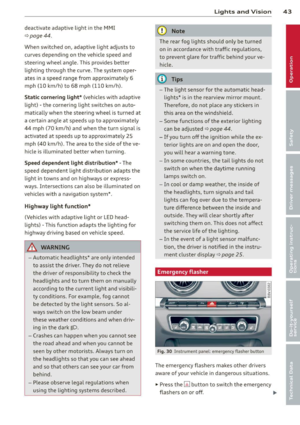 45
45 46
46 47
47 48
48 49
49 50
50 51
51 52
52 53
53 54
54 55
55 56
56 57
57 58
58 59
59 60
60 61
61 62
62 63
63 64
64 65
65 66
66 67
67 68
68 69
69 70
70 71
71 72
72 73
73 74
74 75
75 76
76 77
77 78
78 79
79 80
80 81
81 82
82 83
83 84
84 85
85 86
86 87
87 88
88 89
89 90
90 91
91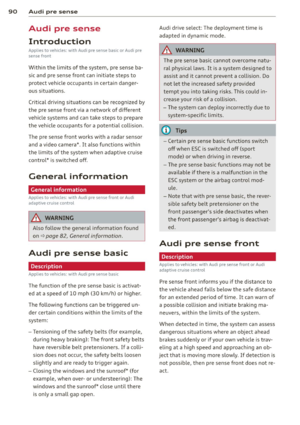 92
92 93
93 94
94 95
95 96
96 97
97 98
98 99
99 100
100 101
101 102
102 103
103 104
104 105
105 106
106 107
107 108
108 109
109 110
110 111
111 112
112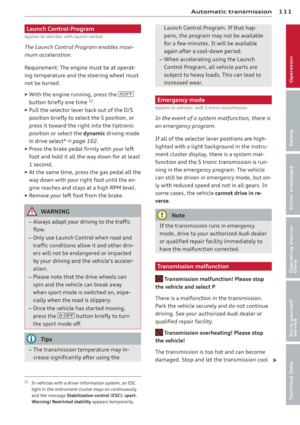 113
113 114
114 115
115 116
116 117
117 118
118 119
119 120
120 121
121 122
122 123
123 124
124 125
125 126
126 127
127 128
128 129
129 130
130 131
131 132
132 133
133 134
134 135
135 136
136 137
137 138
138 139
139 140
140 141
141 142
142 143
143 144
144 145
145 146
146 147
147 148
148 149
149 150
150 151
151 152
152 153
153 154
154 155
155 156
156 157
157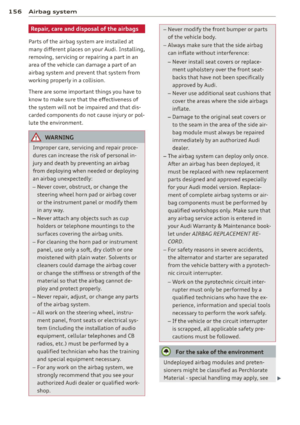 158
158 159
159 160
160 161
161 162
162 163
163 164
164 165
165 166
166 167
167 168
168 169
169 170
170 171
171 172
172 173
173 174
174 175
175 176
176 177
177 178
178 179
179 180
180 181
181 182
182 183
183 184
184 185
185 186
186 187
187 188
188 189
189 190
190 191
191 192
192 193
193 194
194 195
195 196
196 197
197 198
198 199
199 200
200 201
201 202
202 203
203 204
204 205
205 206
206 207
207 208
208 209
209 210
210 211
211 212
212 213
213 214
214 215
215 216
216 217
217 218
218 219
219 220
220 221
221 222
222 223
223 224
224 225
225 226
226 227
227 228
228 229
229 230
230 231
231 232
232 233
233 234
234 235
235 236
236 237
237 238
238 239
239 240
240 241
241 242
242 243
243 244
244 245
245 246
246 247
247 248
248 249
249 250
250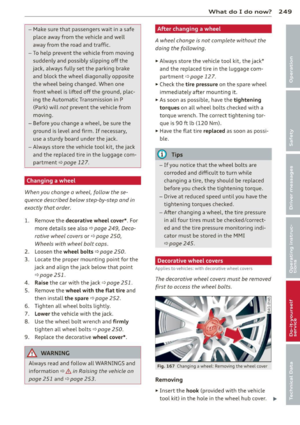 251
251 252
252 253
253 254
254 255
255 256
256 257
257 258
258 259
259 260
260 261
261 262
262 263
263 264
264 265
265 266
266 267
267 268
268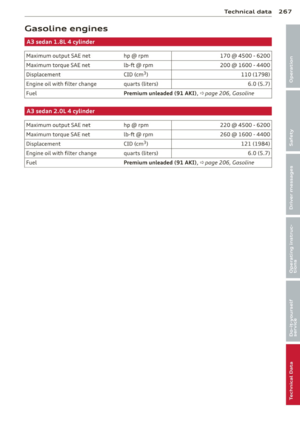 269
269 270
270 271
271 272
272 273
273 274
274 275
275 276
276 277
277 278
278 279
279 280
280 281
281 282
282 283
283 284
284 285
285 286
286 287
287






